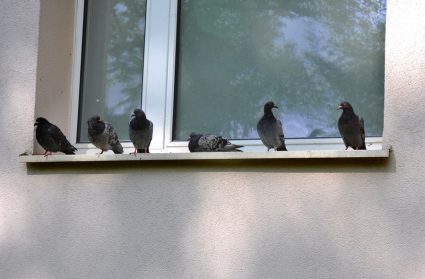
In this comprehensive guide, we’ll explore how to protect a chicken coop from rain, ensuring a comfortable and safe environment for your feathered friends. From the right roofing material to proper ventilation, we’ll cover all aspects to keep your coop dry and cozy.
To protect a chicken coop from rain, ensure proper ventilation, use a pitched roof for easy runoff, and waterproof both the interior and exterior. Locate the coop on high ground for good drainage and consider elevating it. Use weather-resistant materials for construction and ensure the coop is easily accessible for cleaning and maintenance. Regularly inspect and repair any damages for optimal rain resistance.
The Importance of Protecting Your Chicken Coop from Rain
Rain can affect the overall health and productivity of your chickens, leading to issues like wet feathers, increased disease risk, decreased egg production, and respiratory illnesses. Wet and damp conditions can create an ideal environment for parasites and harmful bacteria, leading to serious health issues among your flock. Hence, protecting your chicken coop from rain is crucial to maintaining a healthy environment for your chickens.
Key Considerations When Designing a Chicken Coop to Endure Rain
When designing a chicken coop to endure rain, several key considerations come into play:
- Proper Ventilation: Good ventilation is crucial year-round in a chicken coop. Vents should be situated higher than the chickens’ heads when they sleep to prevent drafts.
- Roof Design: Opt for a slanted or pitched roof to allow rainwater to run off easily. A tin roof is a good choice for rainy climates as it overlaps with fewer seams than other building materials.
- Waterproofing: Waterproof the interior and exterior of the coop to prevent water from seeping in. Use products like Liquid Rubber Seam Tape to bridge seams, joints, cracks, and gaps within the coop.
- Drainage: Locate the chicken coop at the top of a sloped yard to avoid flooding in rainy climates. Ensure proper drainage around the coop to prevent muddy conditions.
- Elevated Coop: Consider raising the coop off the ground to keep it dry and provide better drainage.
- Weather-resistant materials: Use weather-resistant materials for the coop’s construction, such as wood, metal, or plastic. Ensure the materials are strong, sturdy, and predator-proof.
- Accessibility: Make the coop easily accessible for cleaning and maintenance, especially during wet weather.
Effective Materials for Creating a Waterproof Chicken Coop
Creating a waterproof chicken coop involves using the right materials. Here are a few suggestions:
- Plywood: Plywood is a common material for chicken coop construction. To make it waterproof, you can cover it with a weatherproof material like metal, plastic, or shingles.
- Liquid Rubber Waterproof Sealant: This product can be used to seal any leaks in the chicken coop’s roof, gutters, and flooring. It creates a strong waterproof membrane that can withstand harsh weather conditions.
- Waterproof paint or wood sealant: Applying a waterproof paint or wood sealant to the exterior of the chicken coop can help protect it from moisture and prolong its lifespan.
- Metal sheets: Galvanized steel or tin sheets can be used for the chicken coop’s roof, providing protection from rain and other elements.
- Plastic sheets: PVC or polycarbonate materials can also be used for the chicken coop’s roof, offering a lightweight and waterproof solution.
Regular Maintenance for Rain Resistance
Regular maintenance is crucial to the rain resistance of a chicken coop. This includes roof maintenance, weatherproofing, material maintenance, enclosure maintenance, and ground treatment. Regularly inspecting and repairing any damages helps maintain its impermeability, preventing water from entering the coop.
Additional Measures for Heavy Rainfall or Storms
During heavy rainfall or storms, there are several additional measures you can take to ensure the safety and comfort of your chickens. These include securing the chicken coop, clearing hazards, providing clean, dry feed and water, adding vitamins and electrolytes, preparing for power outages and supply shortages, moving chickens indoors if necessary, removing potential projectiles, checking for injuries and coop damages, clearing puddles and providing fresh water.
Conclusion
Protecting your chicken coop from rain is vital for the health and productivity of your chickens. By following the steps outlined in this guide, you can effectively shield your coop from the elements and create a comfortable and healthy environment for your chickens. Remember, a dry coop is a happy coop!
Frequently Asked Questions
What are the signs of a poorly ventilated chicken coop?
The signs of a poorly ventilated chicken coop include a buildup of condensation or moisture inside the coop, a strong ammonia smell, and chickens showing signs of respiratory distress such as sneezing, wheezing, or coughing.
Can I use any paint for waterproofing my chicken coop?
Not all paints provide waterproofing for your chicken coop. It’s best to use a waterproof paint or wood sealant specially designed to protect outdoor structures from moisture.
How often should I inspect and maintain my chicken coop for rain resistance?
Regular inspections and maintenance should be done at least every season, or more frequently in areas with heavy rainfall or extreme weather conditions.
What should I do if my chicken coop floods despite my precautions?
If your chicken coop floods, move your chickens to a safe, dry location immediately. Then work on improving the coop’s drainage system, raising the coop’s base, or relocating the coop to a higher spot.
What type of roof is best for a chicken coop in a rainy climate?
A slanted or pitched roof made from tin, galvanized steel, or waterproofed plywood is a good choice for a chicken coop in a rainy climate. These materials allow rainwater to run off easily and prevent leaks.










